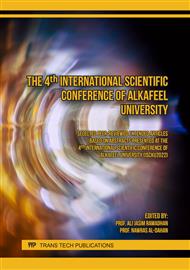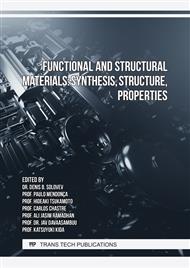p.13
p.23
p.33
p.39
p.51
p.61
p.70
p.75
p.89
Experimental Investigation of Application Taguchi Method to Optimize Heat Treatment Parameters Using Nanofluids of AISI 52100 Steel
Abstract:
The present work describes a heat treatment procedure using nanofluids as quenchants for (AISI 52100 Steel) via the Taguchi method to optimize process parameters. The nanofluids have been prepared from nanoparticles (SiO2, SiC and Fe2O3) and base media consist of distilled water, toluene and ethylene glycol of volume concentrations of 0.02, 0.04 and 0.06 %. The present investigation considers hardness and wear rate as optimization criteria. The experimental variables that were selected for this study are: (austenitizing and tempering temperature), (type and volume fraction of nanoparticles) and (base media). They represent significant factors that influence on these optimization criteria. (AL18 orthogonal array), (analysis of variances (ANOVA)) and (signal/noise ratio (S/N)) were applied by means of (Minitab 18) software to examine the performance characteristics of the process parameters. The analysis of (S/N) ratio shows that the most significant parameters that give the optimum heat treatment conditions for hardness of the examined steel (AISI 52100) are: (austenitizing temperature of 800°C), (distilled water as a type of base media) and (tempering temperature of 180°C), in addition to (Fe2O3 as a nanoparticles type) and finally (nanoparticles volume fraction of 0.06%). In contrast, for the wear rate, they were: (austenitizing temperature of 800°C), type of base media (distilled water), tempering temperature of (180°C), and volume fraction of nanoparticles (0.06%) tempering. Finally, nanoparticles type (Fe2O3) is the most significant parameter for hardness and wear rate. ANOVA, exhibited that the austenitizing temperature has major effect on producing high values of hardness and wear rate for the AISI 52100 Steel.
Info:
Periodical:
Pages:
51-60
Citation:
Online since:
April 2023
Authors:
Keywords:
Price:
Сopyright:
© 2023 Trans Tech Publications Ltd. All Rights Reserved
Share:
Citation:



